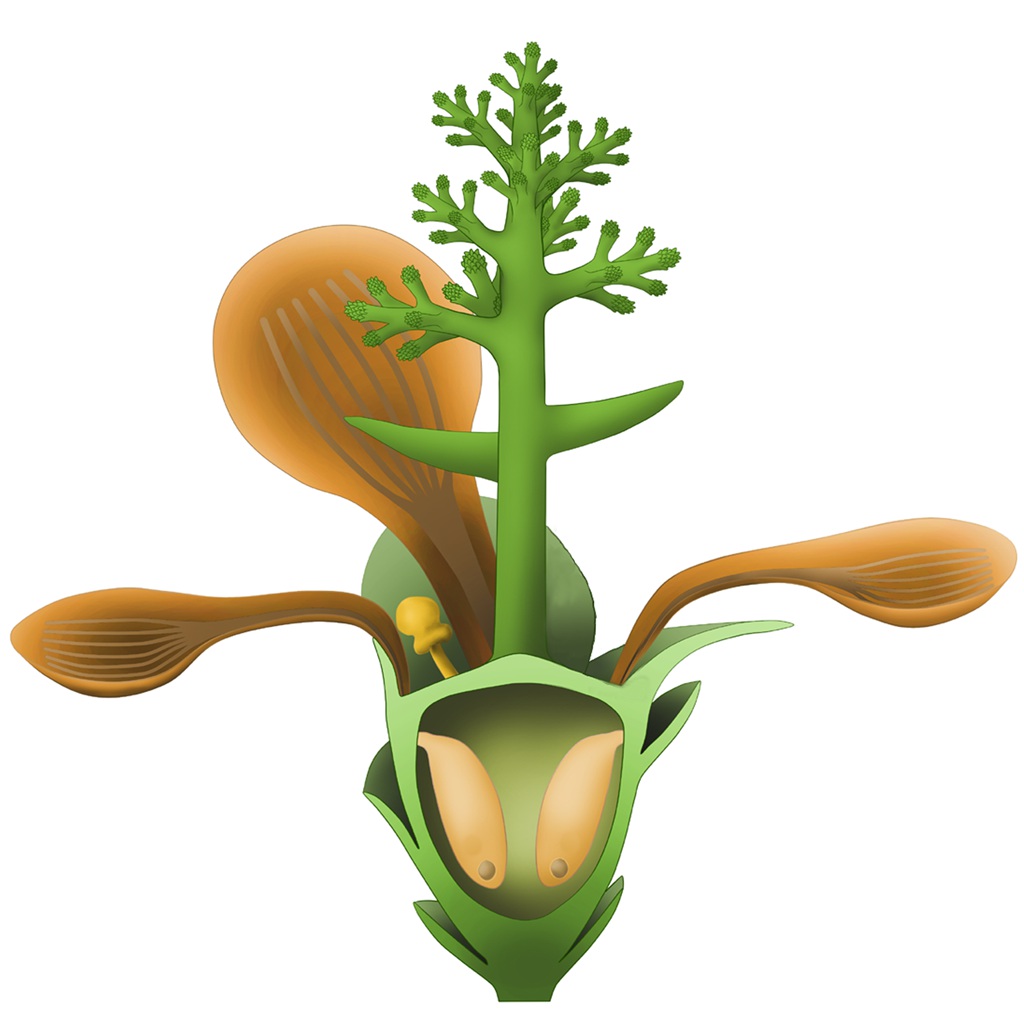
Analysis of fossil specimens of a flower called Nanjinganthus from the Early Jurassic (more than 174 million years ago) suggests that flowers originated 50 million years earlier than previously thought, a study published in eLife reports.
Before now, angiosperms (flowering plants) were thought to have a history of no more than 130 million years – despite molecular clocks indicating they must have appeared earlier – since no convincing fossil-based evidence existed.
The discovery of Nanjinganthus dendrostyla, however, offers fossil evidence that extends the evolutionary timeline and, due to the flower’s unexpected characteristics, throws widely accepted theories of plant evolution into question.
"Researchers were not certain where and how flowers came into existence because it seems that many flowers just popped up in the Cretaceous from nowhere," said FU Qiang, a researcher from the Nanjing Institute of Geology and Paleontology of the Chinese Academy of Sciences (NIGPAS). "Studying fossil flowers, especially those from earlier geologic periods, is the only reliable way to get an answer to these questions."
The team studied 264 specimens of 198 individual flowers preserved on 34 rock slabs from the South Xiangshan Formation – an outcrop of rocks in the Nanjing region of China renowned for its fossils from the Early Jurassic epoch.
Due to the abundance of fossil samples used, the researchers could dissect some and then study them with sophisticated microscopy. The high-resolution pictures of the flowers – from different angles and with different magnifications – allowed the team to envision the features of Nanjinganthus dendrostyla.
The key feature of angiosperms is the presence of fully enclosed ovules, which are precursors of seeds before pollination. In the current study, the reconstructed flower was found to have a cup-form receptacle and ovarian roof that together enclose the ovules/seeds. This discovery was crucial, since these features can confirm the flower as of an angiosperm.
Although there have been reports of angiosperms from the Middle-Late Jurassic epochs in northeastern China, the morphological features of Nanjinganthus distinguish it from other specimens and suggest that it is a new angiosperm genus.
The team hopes to determine whether angiosperms are monophyletic – which would mean Nanjinganthus represents a stem group giving rise to all later species – or polyphyletic, meaning Nanjinganthus represents an evolutionary dead end and has little to do with many later species.
"The origin of angiosperms has long been an academic headache for many botanists," said WANG Xin of NIGPAS. "Our discovery has moved the botany field forward and will allow a better understanding of angiosperms."

Individuals of Nanjinganthus. (Image by NIGPAS)

Idealized reconstruction of Nanjinganthus. (Image by NIGPAS)

Siltstone slabs bearing Nanjinganthus. (Image by NIGPAS)

86-10-68597521 (day)
86-10-68597289 (night)

86-10-68511095 (day)
86-10-68512458 (night)

cas_en@cas.cn

52 Sanlihe Rd., Xicheng District,
Beijing, China (100864)

